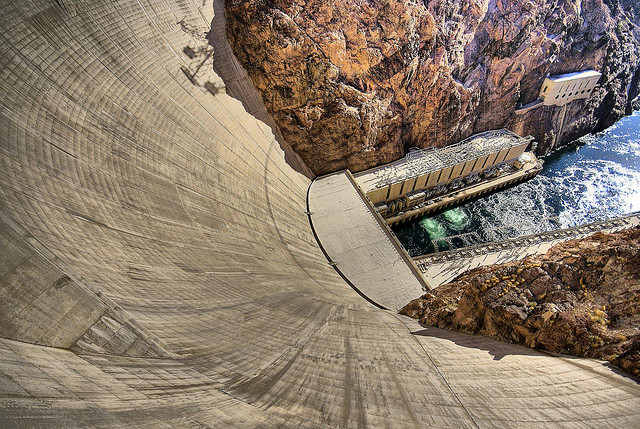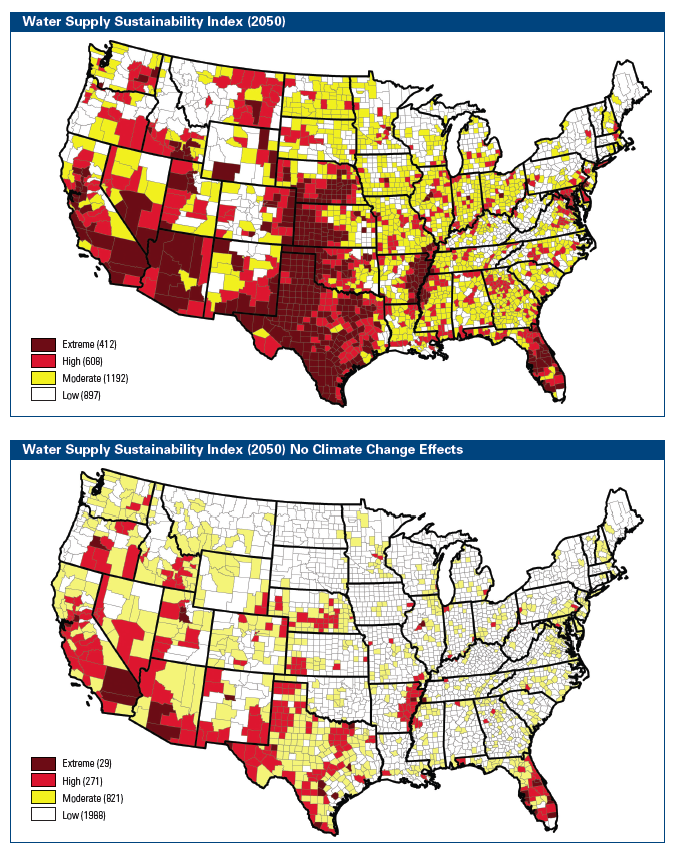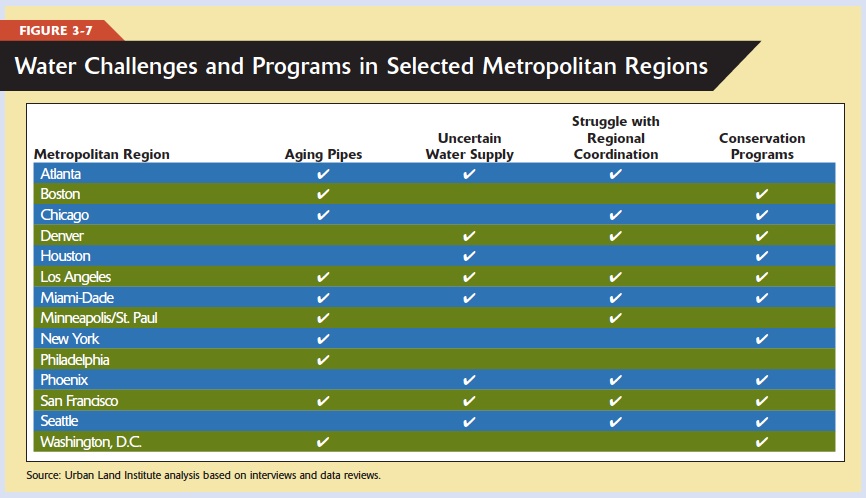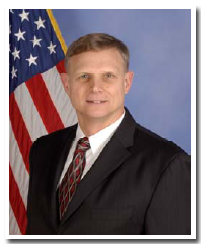REMU WL 160 waterpipes Backfilling
From MichaelAnkarhorn on YouTube
Archive for the ‘Drinking Water’ Category
Video: Burying Water Infrastructure
Monday, August 30th, 2010Photo Group: Great American Dams
Wednesday, August 18th, 2010
Hoover Dam, NV; Roosevelt Dam, AZ; Keystone Dam, OK; New Croton Dam, NY; Blue Ridge Dam, GA
View this complete post...Gov. Ed Rendell: Rebuild our Infrastructure
Thursday, August 5th, 2010PITTSBURGH POST-GAZETTE
By Pennsylvania Governor Ed Rendell
Most schools are out for a summer break after final grades were toted home in students’ backpacks throughout the country. Around the same time, America got its infrastructure report card — and the results aren’t good.
Imagine sitting around the kitchen table reviewing Junior’s grades. His last report card shows a cumulative average of D. As a family, parent, teacher or community, wouldn’t we do all we could to try to help this student improve? Of course we would.
It’s the same with the state of the country’s infrastructure. Consider some of these “grades,” as reported in the American Society of Civil Engineers’ most recent infrastructure report card: transit, D; energy, D+; dams, D; bridges, C; aviation, D; drinking water, D-; hazardous waste, D; schools, D; and wastewater, D-.
I’d say this defines our infrastructure situation as one in crisis.
View this complete post...Video: Green City, Clean Waters
Monday, August 2nd, 2010When it rains in the City of Brotherly Love, problems soon follow because more than half the city has “combined” sewers – pipes that carry both storm water and sewage. When it rains, the system fills quickly. The surplus, which includes raw sewage and road oil, backs up into basements and gushes untreated into rivers through 164 overflow pipes.
Instead of going the route of many other cities and building miles-long, multibillion-dollar tunnels to hold storm-water overflows–and then pumping it back into the system when the rain stops–Philadelphia’s 20-year stormwater management plan is based on “green infrastructure” and offers benefits that can be appreciated above the ground.
View this complete post...Climate Change, Water, and Risk: Current Water Demands Are Not Sustainable
Thursday, July 22nd, 2010
NATIONAL RESOURCES DEFENSE COUNCIL
This analysis shows that climate change will have significant impacts on water supplies throughout the country in the coming decades, with over 1,100 counties facing greater risks of water shortages due to the effects of climate change. While water management and climate change adaptation plans will be essential to lessen the impacts, they cannot be expected to counter the effects of a warming climate. One reason is that the changes may simply outrun the potential for alternatives such as modifying withdrawals, increasing water use efficiency, increased water recycling, enhancing groundwater recharge, rainwater harvesting and inter-basin or inter-county transfers to make up for water deficits.
What are the greatest urban design challenges architects are working on in their own communities?
Wednesday, June 16th, 2010At the AIA 2010 Convention, AIA members talk about how they’re reshaping the fabric of entire neighborhoods and cities.
View this complete post...Just Released: Infra report from Urban Land Institute
Tuesday, April 13th, 2010
Infrastructure 2010: Investment Imperative, the latest annual infrastructure report by Urban Land Institute and Ernst & Young, focuses on water infra and urges decision-makers to view infrastructure as a long-term investment.
View this complete post...INFRASTRUCTURE 2010: INVESTMENT IMPERATIVE
Tuesday, April 13th, 2010URBAN LAND INSTITUTE
Falling behind global competitors, the United States struggles to gain traction in planning and building the critical infrastructure investments that are necessary to ensure future economic growth and support a rapidly expanding population.
Recent federal stimulus spending addresses some pressing repair needs for transport- and water-related systems and provides seed funding for high-speed rail in important travel corridors, as well as new energy infrastructure. But recession-busted government budgets, entitlement and defense expenditures, and ballooning health care costs push infrastructure down most political priority lists—leaders continue to procrastinate when it comes to new investments as stressed taxpayers balk at more spending.
View this complete post...Smart Green Infrastructure: How To Grow Sustainable Cities
Monday, April 12th, 2010Andy Lipkis, Founder and President of TreePeople, describes how this organization has pioneered an integrated approach to managing urban ecosystems as watersheds in the Los Angeles region.
View this complete post...ASCE’s Guiding Principles for the Nation’s Critical Infrastructure
Tuesday, March 30th, 2010
AMERICAN SOCIETY OF CIVIL ENGINEERS
Welcome to An Eye on Infrastructure, an ASCE podcast series sponsored by ASCE Committee on Critical Infrastructure. An Eye on Infrastructure features industry experts discussing current issues relating to critical infrastructure.
This episode discusses ASCE’s Guiding Principles for theNation’s Critical Infrastructure featuring Joe Manous, Jr., P.E., Ph.D., D.WRE, F. ASCE Future Directions Team Leader for the Institute for Water Resources, US Army Corps of Engineers
View this complete post...Follow InfrastructureUSA
CATEGORIES
- Accountability (219)
- Aging Infrastructure (756)
- Aviation (130)
- Biking (323)
- Bipartisan (271)
- Bridges (493)
- Broadband (57)
- Buses (160)
- Carbon Tax (22)
- Clean Air (182)
- Climate Change (200)
- Competitiveness (230)
- Congestion (327)
- Dams (77)
- Democrat (123)
- Drinking Water (192)
- Economic Stimulus (276)
- Employment (207)
- Energy (585)
- Environment (615)
- Equity (239)
- Funding (888)
- Global (205)
- Great American Infrastructure (33)
- Green (294)
- Guests on The Infra Blog (283)
- Hazardous Waste (27)
- High Speed Rail (224)
- Highway (785)
- Inland Waterways (204)
- Jobs (251)
- Land Use (98)
- LEED (28)
- Levees (42)
- Local (1,910)
- National (1,526)
- Policy (1,121)
- Pollution (215)
- Private Investment (213)
- Public Opinion (189)
- Public Parks & Recreation (197)
- Public Transportation (1,028)
- Racism (6)
- Rail (503)
- Recession (65)
- Recovery (218)
- Republican (109)
- Roads (1,120)
- Schools (80)
- Seaports (68)
- Smart Grid (98)
- Smart Growth (442)
- Solid Waste (26)
- Sustainability (765)
- Tax (112)
- Technology (397)
- Telecommunications (46)
- Transit (1,333)
- Urban Planning (981)
- Wastewater (182)
- Water Treatment (167)
Video, stills and tales. Share images of the Infra in your community that demands attention. Post your ideas about national Infra issues. Go ahead. Show Us Your Infra! Upload and instantly share your message.
Is the administration moving fast enough on Infra issues? Are Americans prepared to pay more taxes for repairs? Should job creation be the guiding determination? Vote now!
What do the experts think? This is where the nation's public policy organizations, trade associations and think tanks weigh in with analysis on Infra issues. Tell them what you think. Ask questions. Share a different view.
The Infra Blog offers cutting edge perspective on a broad spectrum of Infra topics. Frequent updates and provocative posts highlight hot button topics -- essential ingredients of a national Infra dialogue.
Dear Friends,
It is encouraging to finally see clear signs of federal action to support a comprehensive US infrastructure investment plan.
Now more than ever, our advocacy is needed to keep stakeholders informed and connected, and to hold politicians to their promises to finally fix our nation’s ailing infrastructure.
We have already engaged nearly 280,000 users, and hoping to add many more as interest continues to grow.
We require your support in order to rise to this occasion, to make the most of this opportunity. Please consider making a tax-deductible donation to InfrastructureUSA.org.
Steve Anderson
Managing Director
SteveAnderson@InfrastructureUSA.org
917-940-7125













 RSS Feed
RSS Feed